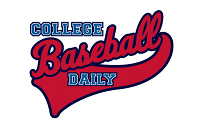The NCAA Baseball Rules Committee last week supported a request from the Southeastern Conference to allow experimental rules for a coach’s challenge system and wireless communication from the dugout to the catcher during in-conference competitions only.
If approved by the NCAA Playing Rules Oversight Panel, the experimental rules would be put in place for 2018 SEC regular-season and conference tournament games. The experimental rules would not be allowed in non-conference games involving SEC teams.
The Playing Rules Oversight Panel is scheduled to discuss the baseball rules proposals during a conference call Aug. 16.
The challenge system recommendation would allow a coach one challenge to have a call overturned by video review. If the challenge is successful, that coach would be able to challenge another play later in the game.
If the challenge is unsuccessful, the coach would lose the ability to issue a challenge for the rest of the game. However, the umpiring crew can still initiate a video review should they feel it is necessary to ensure the original call was correct.
The proposal also expands the number of plays that can be reviewed to include:
Force/tag play calls: Plays involving all runners acquiring the base before the defensive player’s attempt to put the runner out at any base.
The following base running calls: Calls involving whether a base runner passes a preceding runner before that runner is out; determinations of whether a base runner scored ahead of a third out; and, upon an appropriate appeal by the defensive team, whether a base runner touched a base.
Hit-by-pitch calls: Those plays for which there is a possibility that a pitched ball touches a batter or his clothing.
Tag-up plays: An umpire’s decision whether a runner failed to retouch the base after a fair or foul ball is legally caught by a fielder. (This play is currently permissible for review for plays from third base. This request expands the review to all bases.)
Placement of runners: An umpire’s placement of all runners following any boundary call.
Interference by runners when breaking up a double play.
“We will be collecting data from the SEC, and it will help with video review discussions in the future,” said Elvis Dominguez, chair of the committee and coach at Bradley. “It will help the rules committee as we discuss what plays we should consider the use of replay for and whether replay should be expanded in the postseason.”
Wireless communication
If approved, the experimental rule for wireless communication between the dugout and the catcher will be conducted to see if it improves the pace of play.
In the proposal, the catcher would wear an ear piece to hear the type of pitch the coaching staff wants thrown. Currently, many teams communicate with the catchers through numerical codes. The catcher looks at a wristband to see which pitch the coaching staff wants thrown, then relays the sign to the pitcher.
“We want to see how this plays out,” Dominguez said. “It is a one-year cycle to experiment, and we can decide if we want to make it a permanent rule in the future.”
Bat testing
The committee recommended making bat testing a regular-season rule starting in the 2020 season. The rationale for the delay is to give schools time to purchase the equipment to conduct the test, which currently costs around $1,500.
Under the proposal, bats would be tested before the first game of a series or before each mid-week game to ensure they are compliant.
Additionally, the committee recommended a proposal that would require the barrel of the bat to be a color that contrasts with the ball from 18 inches above the end of the handle to the end cap. If approved, the requirement would take effect in the 2020 season.
“If you don’t have a difference in color, it puts the pitcher and the other fielders at a disadvantage when the ball comes off a white background,” Dominguez said. “We feel it is a safety issue.”

